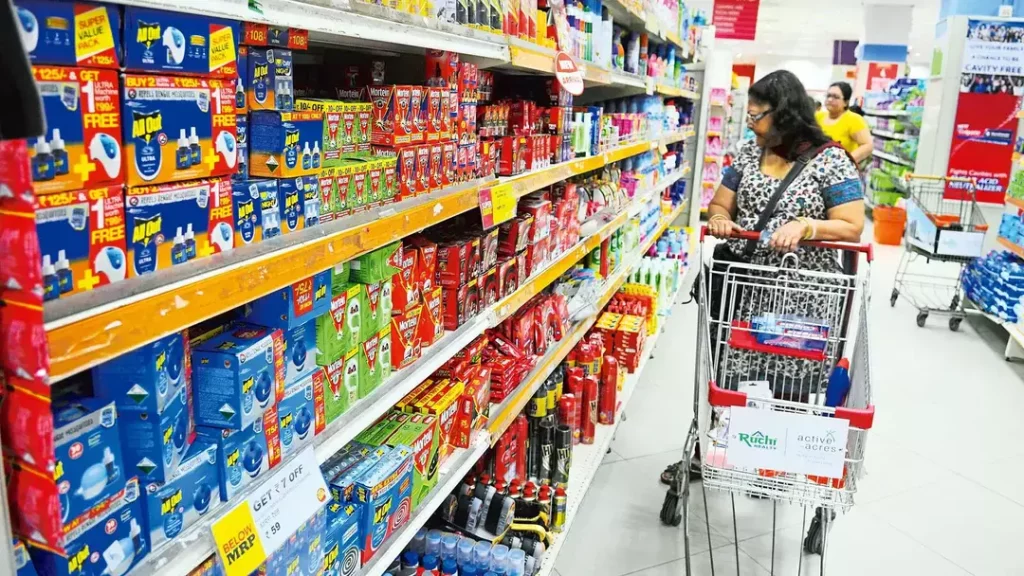
How small FMCG brands are outsmarting big players?
The Indian fast-moving consumer goods (FMCG) industry has witnessed a significant shift in recent years. Small, regional brands have been gaining traction by understanding the hyper-local tastes, pricing smartly, and leveraging quick-commerce to reach a wider audience. These nimble players are outsmarting their larger counterparts by tapping into the desires of consumers who are increasingly seeking authenticity, agility, and local insight.
One such success story is Lahori Zeera, a small spice brand from Delhi that has been able to make a name for itself in a crowded market by focusing on quality, innovation, and customer engagement. Lahori Zeera’s story is a testament to the fact that small brands can thrive in a competitive landscape by being agile, adaptable, and attuned to the needs of their local customers.
In this blog post, we’ll explore how small FMCG brands are outsmarting big players and what lessons can be learned from their success.
Understanding hyper-local tastes
One of the key factors contributing to the success of small FMCG brands is their ability to understand the hyper-local tastes of their customers. Unlike larger brands that often focus on creating a national or global identity, small brands are able to tailor their products to the specific needs and preferences of their local customers.
For example, Lahori Zeera’s range of spices is designed to cater to the specific taste profiles of different regions in India. The brand’s products are made with locally-sourced ingredients and are formulated to meet the unique flavor preferences of different communities. This focus on hyper-local tastes has enabled Lahori Zeera to build a loyal customer base and establish a strong presence in the local market.
Pricing smartly
Another key strategy employed by small FMCG brands is pricing smartly. Unlike larger brands that often focus on creating a premium image and charging a premium price, small brands are able to offer high-quality products at affordable prices.
Lahori Zeera, for instance, offers its products at a competitive price point, making it accessible to a wider range of customers. This pricing strategy has enabled the brand to attract price-sensitive consumers who are looking for value for money.
Leveraging quick-commerce
Small FMCG brands are also leveraging quick-commerce to reach a wider audience. Quick-commerce refers to the use of digital platforms to facilitate fast and convenient deliveries of products to customers.
Lahori Zeera, for example, uses online platforms like Zomato and Swiggy to deliver its products to customers in major cities. This has enabled the brand to expand its reach beyond its physical stores and tap into the growing demand for online grocery shopping.
Authenticity matters
Authenticity is another key factor that sets small FMCG brands apart from their larger counterparts. Unlike larger brands that often focus on creating a national or global identity, small brands are able to maintain their authenticity and connection with their local customers.
Lahori Zeera, for instance, is deeply rooted in its community and is committed to using locally-sourced ingredients and traditional recipes to make its products. This commitment to authenticity has enabled the brand to build a loyal customer base and establish a strong presence in the local market.
Agility and adaptability
Small FMCG brands are also more agile and adaptable than their larger counterparts. They are able to respond quickly to changes in consumer preferences and market trends, which enables them to stay ahead of the competition.
Lahori Zeera, for example, has been able to adapt quickly to changes in consumer preferences by introducing new products and flavors that cater to the evolving tastes of its customers. This agility and adaptability have enabled the brand to stay relevant and competitive in a rapidly changing market.
Lessons for big players
So, what can big players in the FMCG industry learn from the success of small brands like Lahori Zeera? Here are a few key takeaways:
- Understand hyper-local tastes: Big players can learn from small brands’ ability to understand the hyper-local tastes of their customers. By focusing on creating products that cater to the specific needs and preferences of different regions, big players can build a stronger connection with their customers.
- Pricing smartly: Big players can learn from small brands’ pricing strategies. By offering high-quality products at affordable prices, small brands are able to attract price-sensitive consumers who are looking for value for money.
- Leverage quick-commerce: Big players can learn from small brands’ use of quick-commerce to reach a wider audience. By leveraging online platforms to facilitate fast and convenient deliveries of products, big players can expand their reach and tap into the growing demand for online grocery shopping.
- Authenticity matters: Big players can learn from small brands’ commitment to authenticity and connection with their local customers. By maintaining their authenticity and connection with their customers, big players can build a stronger brand identity and loyalty.
- Agility and adaptability: Big players can learn from small brands’ agility and adaptability. By responding quickly to changes in consumer preferences and market trends, big players can stay ahead of the competition and maintain their market share.
Conclusion
The Indian FMCG industry is undergoing a significant shift, with small, regional brands gaining traction by understanding hyper-local tastes, pricing smartly, and leveraging quick-commerce. These nimble players are outsmarting their larger counterparts by tapping into the desires of consumers who are increasingly seeking authenticity, agility, and local insight.
As big players in the FMCG industry look to stay ahead of the competition, they would do well to learn from the success of small brands like Lahori Zeera. By understanding hyper-local tastes, pricing smartly, leveraging quick-commerce, maintaining authenticity, and being agile and adaptable, big players can build a stronger connection with their customers and maintain their market share.
Source:
https://ascendants.in/small_business/small-brands-big-lessons-for-fmcg-giants/






